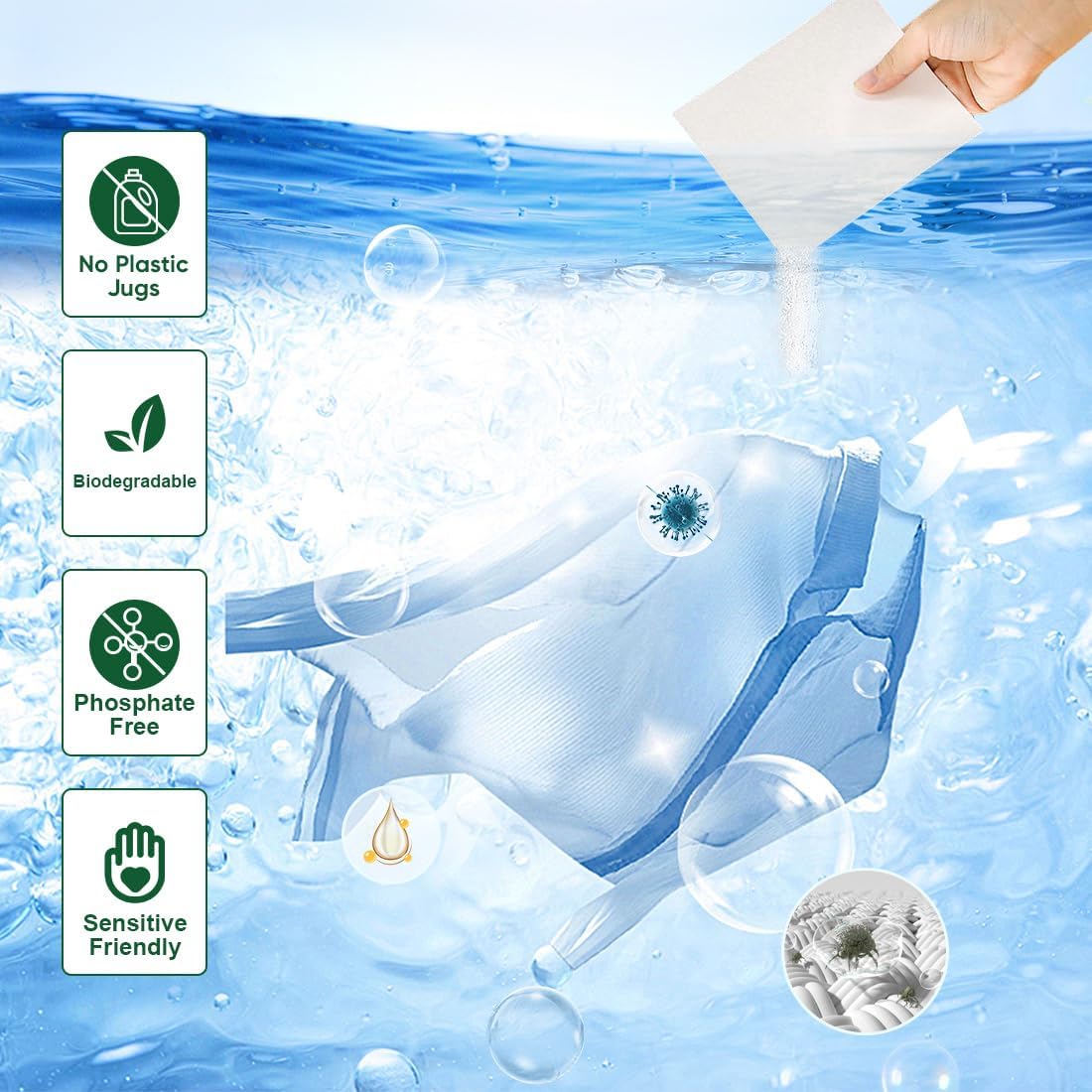Eco-Laundry Revolution: Sustainable Detergents and Energy-Saving Habits
In the age of environmental consciousness, even routine household tasks such as laundry can have significant ecological impacts. Traditional laundry practices contribute to water and energy consumption, release microplastics, and introduce chemical pollutants into ecosystems. Recognizing these issues has sparked a movement towards eco-friendly laundry solutions, emphasizing sustainable detergents, energy-saving habits, and mindful washing practices. The eco-laundry revolution is more than a trend—it represents a shift in how we approach everyday routines with an awareness of their environmental footprint.
This essay explores the environmental challenges of conventional laundry, sustainable alternatives, and practical strategies for reducing the ecological impact of washing clothes, providing a roadmap for conscientious consumers and households.
The Environmental Impact of Traditional Laundry
Laundry, while seemingly mundane, contributes significantly to environmental degradation. Three major areas of concern include microplastic pollution, chemical runoff, and energy consumption.
Microplastic Pollution
Synthetic fabrics such as polyester, nylon, and acrylic shed tiny plastic fibers during washing. These microplastics are too small to be filtered by wastewater treatment systems, ultimately entering rivers, lakes, and oceans. Studies estimate that a single load of laundry can release tens of thousands of microplastic fibers into the water system. These particles are ingested by aquatic organisms, entering the food chain and posing risks to both wildlife and human health.
Chemical Pollution
Conventional detergents often contain phosphates, surfactants, optical brighteners, and fragrances. When washed into waterways, these chemicals contribute to eutrophication, harming aquatic ecosystems by promoting algae blooms that deplete oxygen levels. Surfactants can be toxic to fish and other organisms, while synthetic fragrances may persist in the environment, adding to the chemical burden of freshwater and marine ecosystems.
Energy and Water Consumption
Washing machines consume electricity and water, with frequent use magnifying the environmental impact. Hot water cycles, in particular, require significant energy, contributing to greenhouse gas emissions. Studies suggest that heating water for laundry accounts for a substantial portion of household energy use. Additionally, older washing machines may use inefficient water cycles, further straining resources.
Table: Environmental Impact of Laundry Practices
| Impact Area | Description | Consequences |
|---|---|---|
| Microplastics | Synthetic fibers shed during washing | Pollution of water bodies, ingestion by wildlife |
| Chemical runoff | Detergents containing phosphates and surfactants | Algae blooms, aquatic toxicity, persistent pollutants |
| Energy consumption | Hot water cycles, frequent machine use | Increased carbon footprint, greenhouse gas emissions |
| Water usage | Inefficient machines, long cycles | Strain on freshwater resources |
Understanding these impacts highlights the urgency of adopting sustainable laundry habits, not only for environmental preservation but also for long-term resource management.
Sustainable Detergents and Eco-Friendly Alternatives
One of the most effective ways to reduce the ecological footprint of laundry is by choosing sustainable detergents. These products prioritize biodegradable ingredients, reduce harmful chemicals, and often come in environmentally conscious packaging.
Types of Sustainable Detergents
-
Plant-Based Detergents
Made from renewable plant ingredients such as coconut, corn, or palm oil derivatives, these detergents are biodegradable and less toxic to aquatic ecosystems. They often avoid phosphates and synthetic fragrances, reducing chemical runoff. -
Soap Nuts and Natural Pods
Soap nuts (Sapindus mukorossi) are naturally saponin-rich fruits that act as cleaning agents when boiled or placed in washing bags. They provide a zero-waste alternative and are hypoallergenic, making them suitable for sensitive skin. -
Low-Impact Concentrates
Concentrated detergents require less packaging and reduce transportation emissions. They are formulated to be effective in cold water, reducing energy consumption. -
Enzyme-Based Detergents
These detergents use natural enzymes to break down stains and organic matter, allowing for effective cleaning at lower temperatures. This reduces both chemical load and energy usage.
Evaluating Sustainability
When selecting eco-friendly detergents, consumers should consider:
-
Biodegradability: Can the ingredients break down naturally without harming ecosystems?
-
Packaging: Is it recyclable, compostable, or minimal?
-
Water Efficiency: Does the product work in cold water and low-water cycles?
-
Certifications: Labels such as EU Ecolabel, EcoLogo, or Nordic Swan indicate verified environmental standards.
Table: Comparison of Sustainable Detergents
| Detergent Type | Key Features | Environmental Benefits |
|---|---|---|
| Plant-based | Derived from renewable oils | Biodegradable, low aquatic toxicity |
| Soap nuts | Natural fruit pods | Zero waste, hypoallergenic |
| Low-impact concentrates | Minimal packaging, cold water formula | Reduces energy, lower carbon footprint |
| Enzyme-based | Uses natural enzymes for stain removal | Effective in cold water, less chemical load |
Energy-Saving Habits for Laundry
Beyond choosing sustainable detergents, energy conservation is crucial for reducing the environmental impact of laundry. Simple behavioral changes can significantly decrease resource usage.
Cold Water Washing
The majority of energy used in laundry goes to heating water. Washing clothes in cold or lukewarm water (20–30°C) can reduce energy consumption by up to 80%, while modern detergents and enzyme-based formulas maintain effective cleaning performance.
Full Loads and Efficient Cycles
Running full loads maximizes the efficiency of each washing cycle. Many washing machines also have eco-cycles, which use lower water levels and slower spinning speeds to conserve energy and reduce wear on fabrics.
Line Drying and Energy-Free Drying
Air drying clothes, either outdoors or on indoor racks, eliminates the energy cost of dryers. Sunlight also acts as a natural disinfectant, reducing the need for bleach or chemical brighteners.
Maintenance and Machine Choice
Regularly cleaning washing machines prevents excess energy usage due to buildup. Additionally, modern energy-efficient machines, rated with high Energy Star or EU efficiency classes, use significantly less water and electricity than older models.
Mindful Frequency
Evaluating whether laundry needs to be done immediately or if garments can be worn multiple times before washing can reduce unnecessary cycles, saving both water and energy.
Table: Energy-Saving Laundry Practices
| Practice | How It Saves Resources | Additional Benefits |
|---|---|---|
| Cold water washing | Reduces energy used to heat water | Preserves fabric color and texture |
| Full loads | Maximizes efficiency per cycle | Reduces total number of washes |
| Eco-cycles | Lower water levels and spinning speed | Minimizes wear on clothes |
| Line drying | Eliminates dryer energy use | Sunlight disinfects and freshens fabrics |
| Regular machine maintenance | Prevents inefficiency | Extends machine lifespan |
Complementary Strategies for Eco-Laundry
In addition to sustainable detergents and energy-saving habits, other practices enhance the environmental friendliness of laundry:
-
Pre-Treatment of Stains
Using targeted spot treatments reduces the need for multiple washes. Natural alternatives such as baking soda, lemon juice, or vinegar can be effective pre-treatments. -
Water Filtration
Installing microplastic filters on washing machines can prevent fibers from entering waterways, reducing pollution at the source. -
Garment Choice and Care
Choosing durable fabrics, avoiding fast fashion items, and following care instructions reduce the frequency of replacement and the need for intensive cleaning. -
Laundry Day Organization
Grouping clothes by color, fabric type, or dirtiness allows optimized cycles and prevents overuse of detergents and energy. -
Community Education
Sharing knowledge about eco-laundry practices encourages wider adoption, contributing to collective environmental impact reduction.
Table: Complementary Eco-Laundry Strategies
| Strategy | Environmental Benefit | Practical Tip |
|---|---|---|
| Pre-treatment of stains | Reduces number of washes | Use natural spot treatments |
| Microplastic filters | Prevents fiber pollution | Install on washing machine outlet |
| Durable fabrics | Fewer replacements, less washing | Invest in high-quality, long-lasting garments |
| Organized laundry loads | Optimizes cycles and detergent usage | Sort by color, fabric, and dirt level |
| Community education | Encourages broader sustainability | Share tips with friends or social media |
Conclusion
The eco-laundry revolution highlights the potential for even small household practices to contribute to environmental sustainability. By adopting sustainable detergents, implementing energy-saving habits, and using complementary strategies, households can significantly reduce their ecological footprint. Microplastics, chemical runoff, and excessive energy consumption—once overlooked—can now be addressed through mindful choices and innovations in laundry technology.
The path to eco-laundry is not just about individual action; it represents a cultural shift towards sustainability, consciousness, and responsibility. With awareness, consistent practice, and the integration of modern, eco-friendly products, laundry becomes more than a chore—it becomes a contribution to the health of our planet.
By prioritizing environmental impact, consumers can influence market trends, encouraging brands to develop greener products and promoting systemic change in household consumption. Every wash becomes an opportunity to preserve water, reduce energy usage, and limit pollution, proving that sustainability is not just a lifestyle choice but a practical, everyday commitment.


